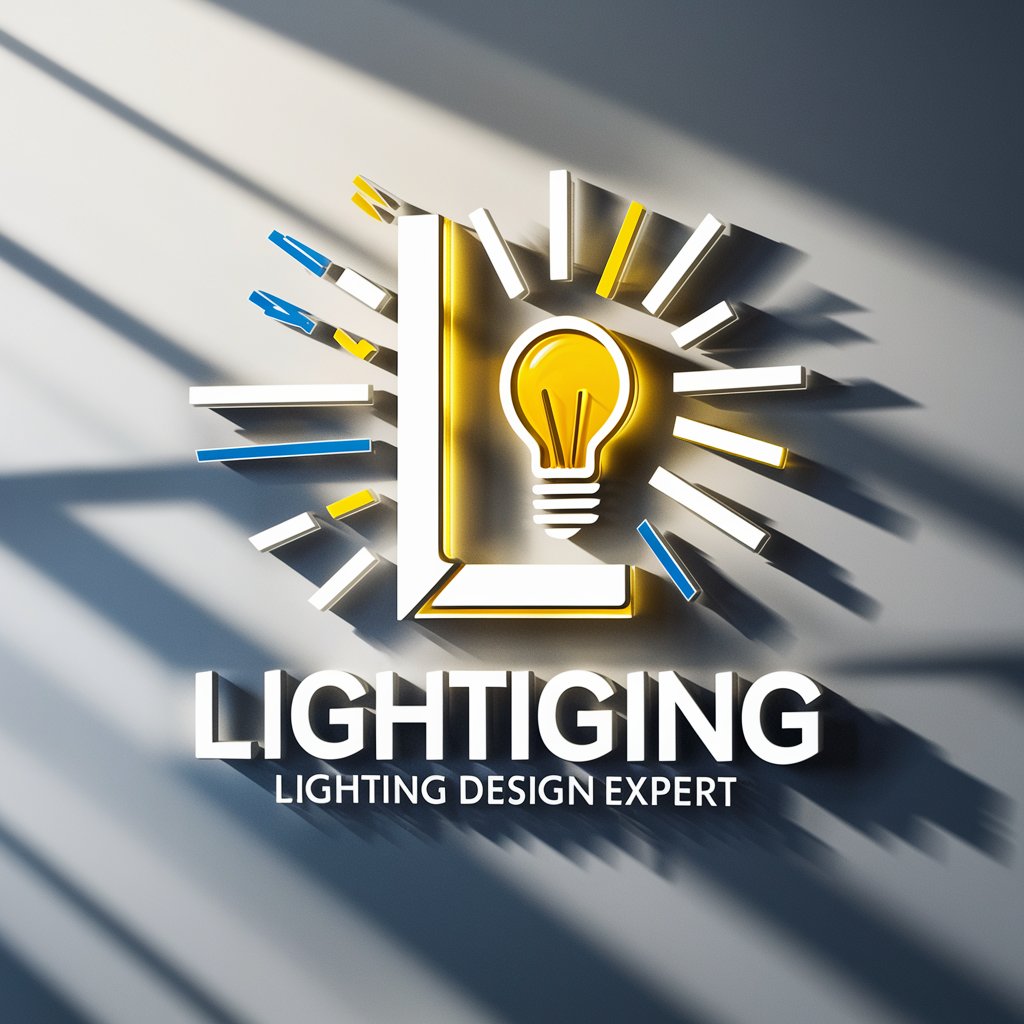Lighting - Lighting Design Insights

Welcome! Let's illuminate your lighting design ideas.
Illuminate Creatively with AI
Can you suggest lighting fixtures for a modern living room?
What are the best practices for lighting design in a commercial space?
How can I create an artistic lighting installation for an event?
What are the different types of lighting fixtures and their applications?
Get Embed Code
Overview of Lighting as a Concept
Lighting, in the context of design and application, encompasses a vast array of fixtures, techniques, and principles aimed at illuminating spaces in ways that enhance functionality, aesthetics, and mood. The primary purpose of lighting design is to tailor the illumination of environments to meet specific needs, whether for residential, commercial, or artistic installations. Examples include creating a warm, inviting atmosphere in a home living room with the use of ambient lighting, enhancing the visibility and productivity in office spaces through task lighting, or highlighting artwork and architectural features with accent lighting. The design process involves selecting appropriate light sources, fixtures, and placements to achieve desired effects, considering factors such as color temperature, brightness, and energy efficiency. Powered by ChatGPT-4o。

Core Functions of Lighting Design
Ambient Lighting
Example
Installing ceiling-mounted fixtures or LED downlights in a living room to provide a base layer of light that is both soft and widespread.
Scenario
This type of lighting is applied in residential settings to create a comfortable and navigable space, enhancing the overall sense of warmth and welcome.
Task Lighting
Example
Using under-cabinet lighting in kitchens or desk lamps in office spaces to illuminate specific work areas.
Scenario
Task lighting is crucial in environments where focus and functionality are needed, such as in workstations or reading areas, to provide direct, bright light that reduces strain on the eyes.
Accent Lighting
Example
Employing track lighting or spotlighting to emphasize artwork, architectural details, or collectibles.
Scenario
In both commercial and residential spaces, accent lighting is used to draw attention to specific elements, enhancing aesthetic appeal and creating focal points within a room.
Decorative Lighting
Example
Incorporating chandeliers, pendant lights, or uniquely designed sconces as statement pieces that add aesthetic value beyond illumination.
Scenario
Decorative lighting serves both an artistic and functional purpose, often used in hospitality settings like hotels and restaurants to create ambiance and reflect the brand's identity.
Target Users of Lighting Design Services
Homeowners and Residential Designers
Individuals and professionals looking to enhance the comfort, functionality, and aesthetic appeal of residential spaces. They benefit from customized lighting plans that address the diverse needs of living, dining, and outdoor areas, improving the quality of life and property value.
Commercial Property Owners and Managers
This group includes operators of office buildings, retail stores, and hospitality venues seeking to optimize their spaces for productivity, customer experience, and sales. Effective lighting design can significantly impact employee satisfaction and customer engagement, driving business success.
Artists and Gallery Owners
For those in the art world, lighting is a tool to enhance the visibility and perception of artworks. Tailored lighting solutions can dramatically affect the presentation and appreciation of art, making it crucial for exhibitions and sales.
Architects and Interior Designers
Professionals who integrate lighting design principles into their projects to create cohesive, functional, and visually appealing spaces. Their work benefits from an understanding of lighting's impact on space perception, color accuracy, and mood setting.

How to Utilize Lighting
Initiate Exploration
Begin by visiting yeschat.ai for a complimentary trial, accessible without the necessity for login or subscription to ChatGPT Plus.
Identify Your Needs
Determine the specific lighting design requirements or challenges you face, such as enhancing ambiance, improving functionality, or addressing specific architectural features.
Explore Lighting Options
Investigate various lighting fixtures, technologies, and design principles that can address your needs. This includes understanding the differences between ambient, task, and accent lighting.
Plan Your Design
Sketch a layout of your space and plan where each type of lighting will be most effective. Consider factors like natural light, room size, and the activities that will take place in each area.
Implement and Adjust
Install your chosen lighting solutions, then adjust placement, intensity, and color temperature as needed to achieve the desired effect. Experimentation is key to refining your lighting design.
Try other advanced and practical GPTs
T Shirt Designer
Design Unique T-Shirts with AI

Drone AI
Empowering Aerospace Innovation with AI

Birthday Wishes Generator
Crafting Personalized Wishes with AI

Calendar
Explore Time with AI-Powered Calendar Insights

Learning Partner
Empowering learning through AI

Date
Discover history and cultures with AI

BioBuilder GPT
Empower Creativity with Nature's Wisdom

Simple Design Grid Maker
AI-powered precision in design grids

Quit Drinking
Empowering sobriety with AI support

The Cocktail Alchemist: Mastering Mixology
Craft Cocktails with AI-Powered Precision

Energy Drinks
Power Your Moments with AI-Driven Energy

Education
Empowering education with AI

Inquiries About Lighting
What is Lighting and how does it function?
Lighting refers to the application of artificial light to design and enhance environments. It functions through the strategic placement and selection of lighting fixtures and technologies to achieve desired effects, such as ambiance, focus, and functionality within a space.
Can Lighting be customized for any space?
Yes, Lighting can be tailored to fit any space, whether residential, commercial, or artistic. Customization involves selecting the right type of lighting (ambient, task, accent) and fixtures that complement the architectural features and design objectives of the space.
What are the key considerations in lighting design?
Key considerations include the purpose of the lighting (e.g., functionality, ambiance), the characteristics of the space (e.g., size, layout, color scheme), energy efficiency, and the interplay of natural and artificial light.
How does Lighting impact mood and atmosphere?
Lighting significantly affects mood and atmosphere through its intensity, color temperature, and placement. Soft, warm lighting can create a cozy, welcoming atmosphere, while bright, cool lighting can enhance focus and energy.
Are there sustainable lighting options?
Yes, there are numerous sustainable lighting options, including LED lights, which consume less energy and have a longer lifespan than traditional bulbs. Incorporating natural light, using dimmers, and choosing fixtures made from sustainable materials are other ways to achieve a greener lighting design.
